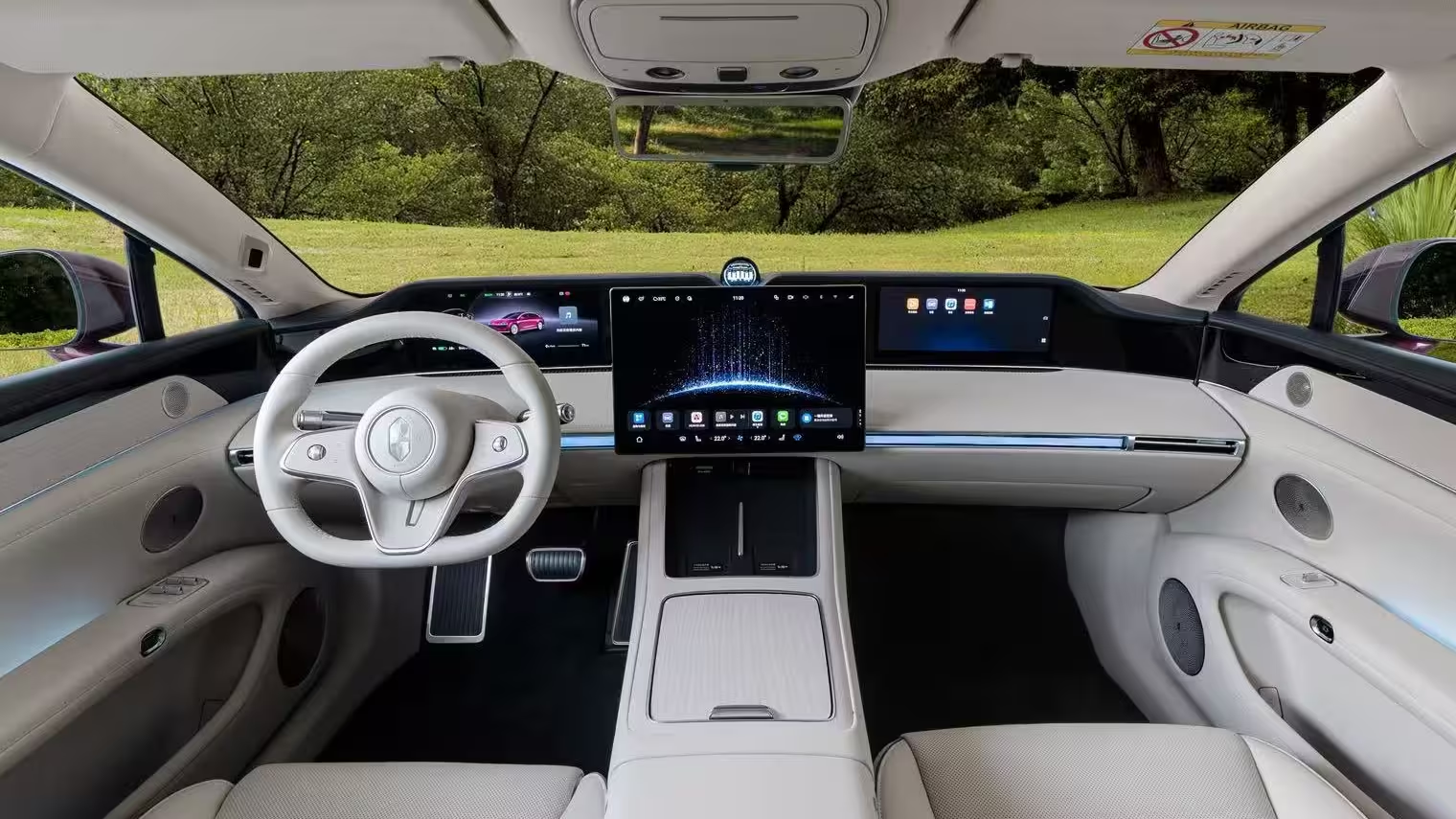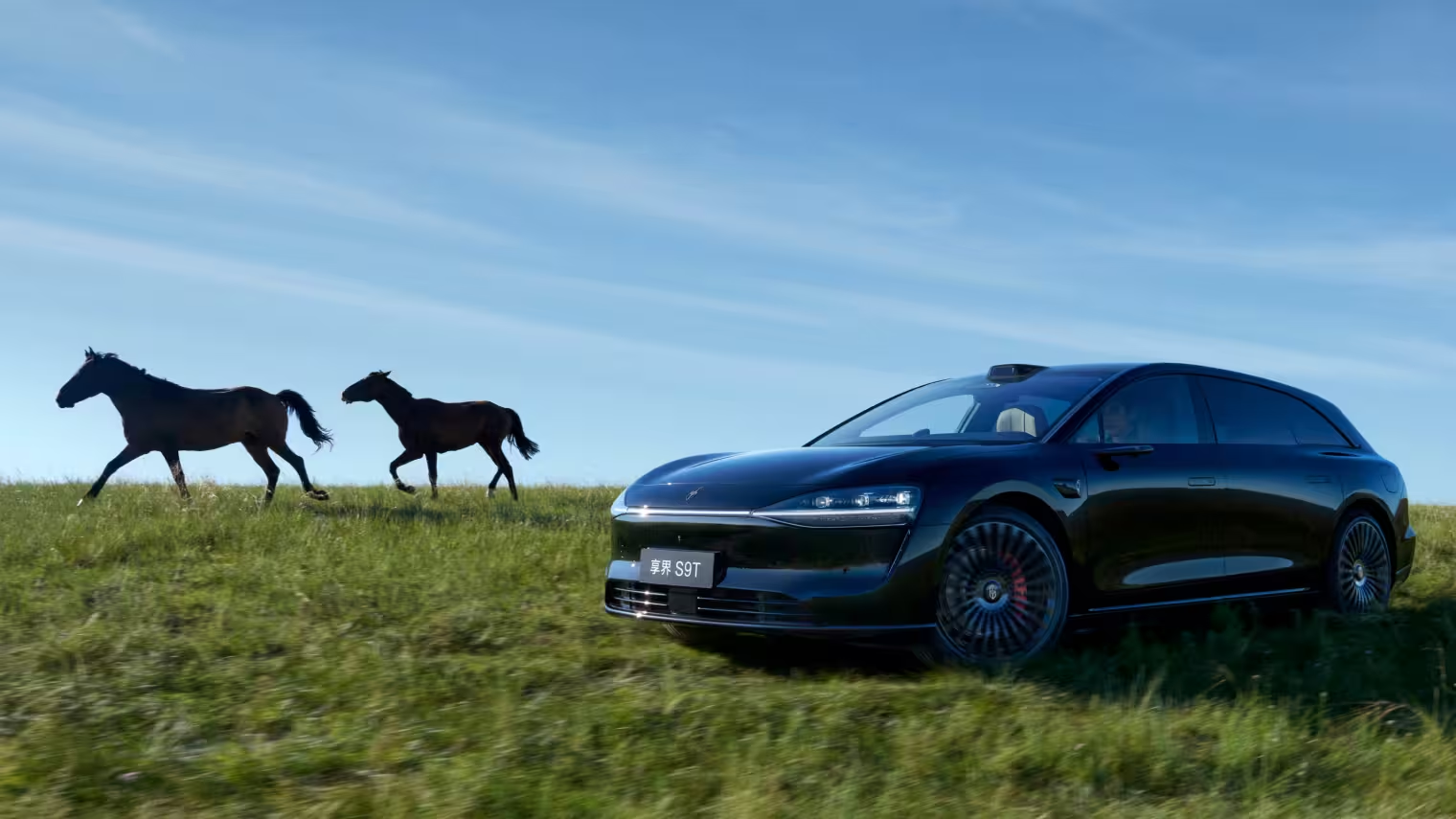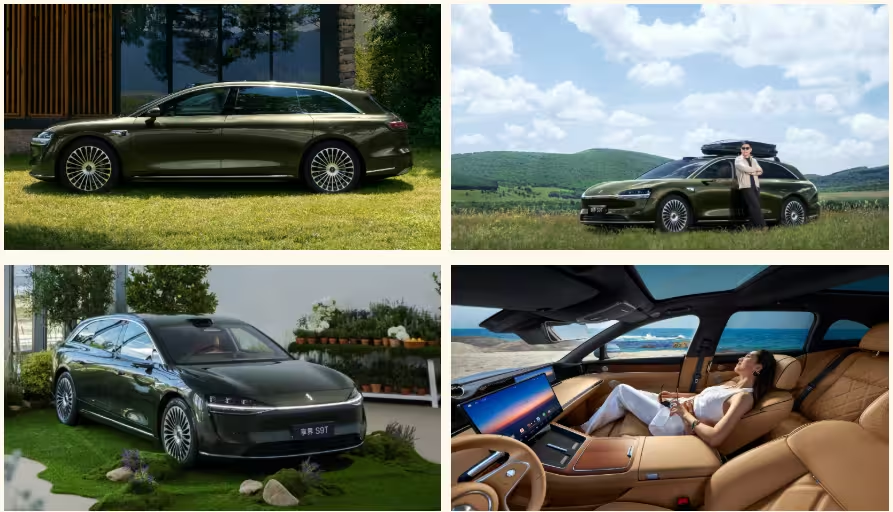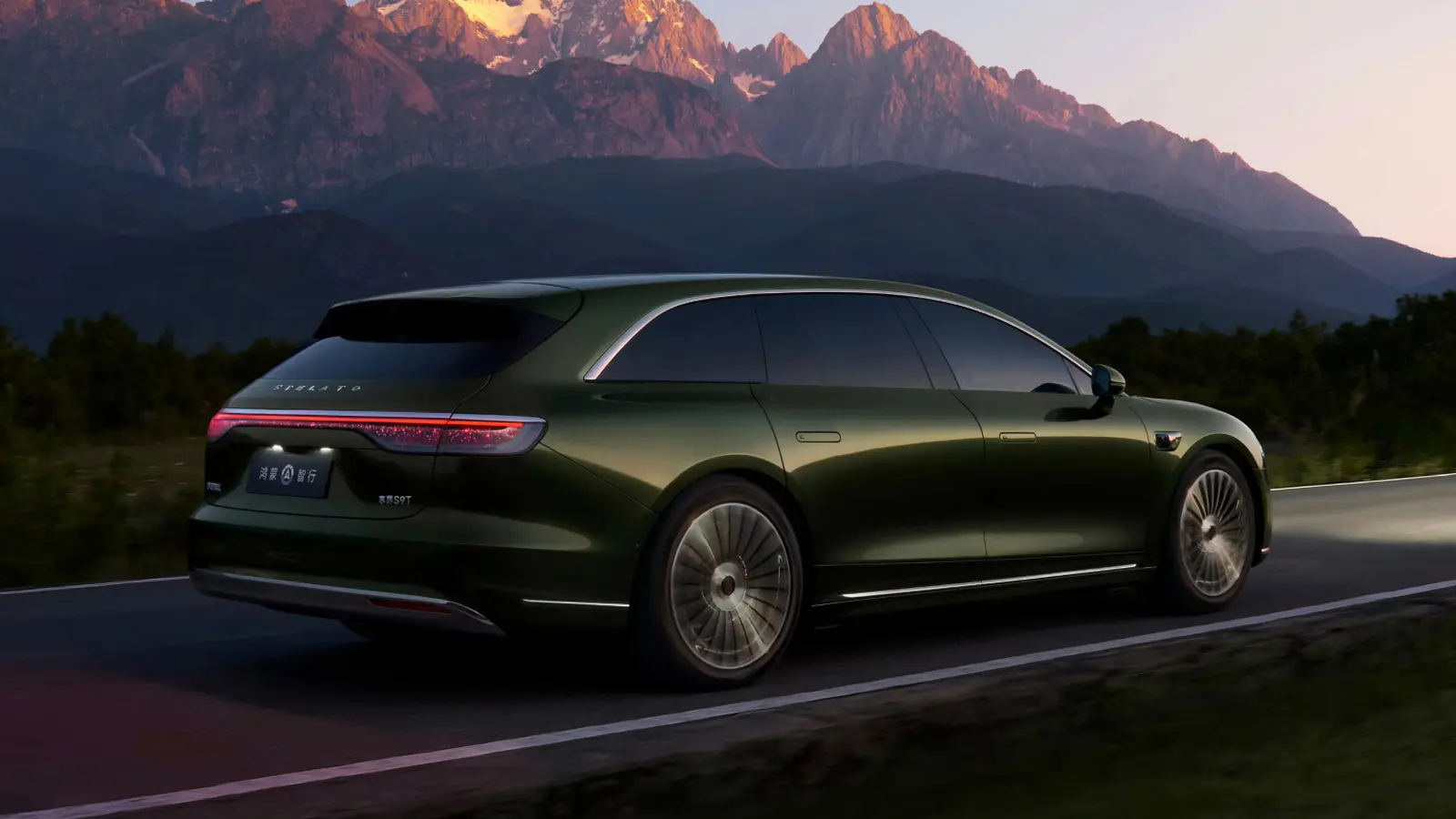6 Minutes
Overview — Stelato S9T presales and market debut
On August 18 Stelato, the young automotive marque backed by Huawei and state-owned BAIC, opened presales for its second model: the Stelato S9T new-energy station wagon. Priced from 328,000 yuan (about 45,670 USD) for the EREV entry model, the 5.16‑meter S9T recorded a rapid initial response — roughly 10,000 reservations within an hour of launch. The S9T arrives as a high-tech rival in the premium wagon segment, offering BEV and EREV powertrain choices, full air suspension and Huawei’s advanced ADS 4 driver assistance suite.
Design and exterior highlights
The S9T inherits the family design language introduced by the Stelato S9 sedan but translates it into a long-roof station wagon silhouette. Key exterior cues include a sealed front fascia with a gauntlet-shaped headlight cluster, a trapezoidal lower bumper intake, multi-spoke chrome-finish wheels, flush retractable door handles and a tapering roofline that ends with a sporty roof spoiler. At the rear the S9T features a single continuous taillight module for a modern, cohesive look.

Dimensions and chassis
The Stelato S9T measures 5,160 mm long, 2,005 mm wide and 1,492 mm tall, riding on a generous 3,050 mm wheelbase. That makes it about 210 mm longer than the Mercedes‑Benz E‑Class All‑Terrain wagon, positioning the S9T as one of the roomiest premium wagons on the market. Air suspension with continuous damping control is standard, emphasizing comfort and chassis adaptability for a range of driving conditions.
Interior, tech and comfort
The cabin is heavily focused on digital convenience and premium comfort. The dash houses three screens: a floating 16.1‑inch central display, a 12.3‑inch digital instrument cluster behind an oval three‑spoke wheel, and a 12.3‑inch passenger display. Huawei provides the vehicle OS and infotainment backbone.
Seating comes well equipped: heated, ventilated seats with 10‑point massage functions are standard, and the front passenger seat includes a zero‑gravity mode. Rear-seat entertainment can be upgraded with an optional 32‑inch projector. Interior color palettes include orange, dark brown, white and light brown. Practicality is strong too — the luggage area offers 660 liters of capacity, and the cabin list includes a 25‑speaker Huawei Sound system and even a built‑in refrigerator.

ADAS and autonomous features
Stelato outfits the S9T with Huawei’s ADS 4 advanced driver assistance system. The ADAS suite relies on 32 sensors, including four Huawei‑made LiDAR units; the forward LiDAR is specified with 192 lines. ADS 4 supports point‑to‑point Navigate on Autopilot (NOA) and automated parking functions, reflecting a serious push toward higher‑level assisted driving capabilities in a production wagon.
Powertrain and performance
The S9T is offered in battery-electric (BEV) and extended‑range electric vehicle (EREV) configurations.
BEV variants
- RWD single motor: 227 kW (304 hp) powering the rear axle.
- AWD dual motor: combined output of 385 kW (516 hp). Both BEV models use a 100 kWh CATL ternary NMC battery pack, with the rear‑drive BEV claiming up to 801 km of range under China’s CLTC cycle — a headline figure that targets range‑conscious buyers.

EREV (range‑extended) variants
The EREV uses either a 37 kWh LFP or a larger 53.4 kWh battery to drive a 227 kW rear electric motor, combined with a 1.5‑liter range extender producing 118 kW (158 hp). The larger battery enables up to 354 km of pure electric driving; with the range extender in hybrid mode the S9T EREV can achieve a combined range of about 1,305 km, prioritizing long‑distance usability.
Trim levels, pricing and availability
Stelato launched presales with two primary trim families (Max and Ultra) across EREV and BEV powertrains. Price ranges announced at presale are:
- EREV Max RWD — 328,000 yuan (~45,670 USD)
- BEV Max RWD — 348,000 yuan (~48,450 USD)
- EREV Ultra RWD — 368,000 yuan (~51,240 USD)
- BEV Ultra AWD — 388,000 yuan (~54,020 USD) The EREV range spans approximately 328,000–368,000 yuan, while the all‑electric options run roughly 348,000–388,000 yuan. Deliveries in the domestic Chinese market are expected to start in September 2025. Stelato’s early focus appears firmly domestic, with no confirmed export schedule announced.

Market positioning and comparison
Stelato positions the S9T as a premium technological alternative to European executive wagons, blending EV/EREV flexibility with high‑end comfort features and advanced driver assistance. While the Stelato S9 sedan’s initial sales (about 15,068 units from October 2024 to July 2025) fell short of the ambitious 120,000 annual target, Stelato and Huawei continue to push the brand’s portfolio forward. The S9T’s combination of long wheelbase, air suspension, extensive on‑board tech and optional long EV range targets buyers who want utility without sacrificing performance or autonomous driving features.
Conclusion — Who should consider the Stelato S9T?
The S9T will appeal to buyers seeking a tech‑heavy premium wagon with multiple electric powertrain options: those wanting extreme EV range will look to the 100 kWh BEV, while long‑distance travelers who prefer fuel backup may favour the EREV for its 1,300+ km total range. Add in advanced LiDAR‑based ADAS, high‑level comfort specifications and a cavernous interior, and the S9T stakes a credible claim in the emerging premium electric wagon segment. For now, Stelato’s priority is to consolidate sales in China; international availability will likely depend on how the brand scales domestically over the next 12–24 months.
Source: carnewschina


Leave a Comment